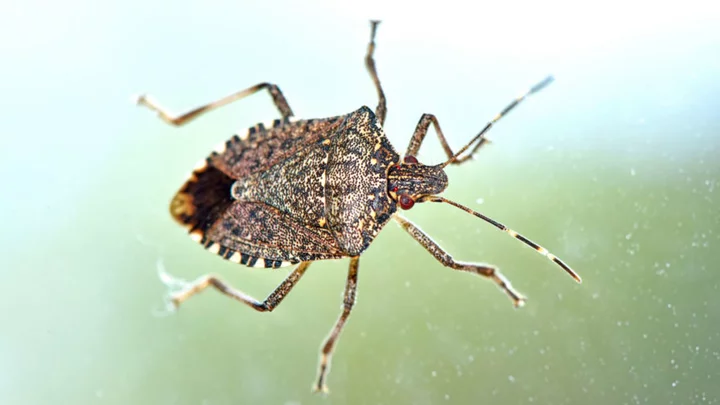Commit the insect you see above to memory. That’s the brown marmorated stink bug, an invasive species originally from Asia that’s made inroads across large sections of the United States, including the Mid-Atlantic.
If you come across one, don’t squish it. In fact, don’t even nudge it. A stink bug’s pestilence can survive after death—and you can probably guess how.
What Stink Bugs Smell Like
According to The State, stink bugs release a secretion that smells absolutely awful when they’re disturbed or feel threatened. Stomping them just expedites the liquid. Those who have had the unfortunate opportunity to get a whiff of the stink bugs’ stench have described it as resembling skunk odor or rotten cilantro. Among the chemicals that give the stink bug’s spray its smell are trans-2-octenal (a chemical found in plants like the black walnut) and trans-2-decenal (found in cilantro).
How to Get Rid of Stink Bugs
In winter, the bugs often find their way indoors, where their half-inch bodies catch the eye of homeowners. Fortunately, stink bugs are largely harmless, and are not known to carry diseases or be destructive to pets or property. (Crops are an exception: The stinkbugs can prove damaging to agriculture.) While exterminators can treat houses, some recommend just ignoring them.
If you want a DIY approach, you can try vacuuming them up or leaving out trays with soapy water. The mixture will kill the bugs and minimize any post-mortem secretion. Experts also recommend sealing any areas where stink bugs might gain entry to your home, like vents (which can be covered with mesh) and flashing (which can be blocked with caulking or expanding foam).
Stink Bugs in the United States
Since the bugs were first spotted in Allentown, Pennsylvania, around 1998, they’ve been spotted in 38 states and Washington, D.C., according to the EPA, while others say the stink bugs are in 47 states and some areas of Canada. Generally, you probably won’t see more than a few in your home, though they’ll definitely congregate if conditions are right. One wildlife biologist in Maryland suffering from an infestation counted 26,000 stink bugs in his residence.
The good news? Scientists have determined that the stinkbug’s natural predator, the samurai wasp, is in hot pursuit. Entomologists at the U.S. Department of Agriculture had made plans to bring the wasp over from Asia to help control the bug population but discovered in 2014 that the wasp had somehow made the journey on its own. Their idea of population control is injecting their own eggs into a stinkbug’s so its larvae can eat the pest. The parasitic wasp is in 14 states and climbing.
A version of this story ran in 2018; it has been updated for 2023.
This article was originally published on www.mentalfloss.com as Why You Should Never Squish a Stink Bug.

